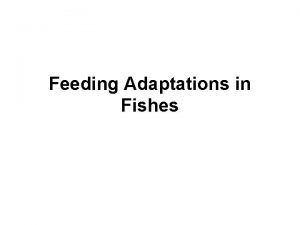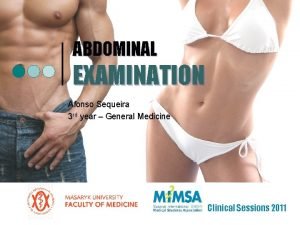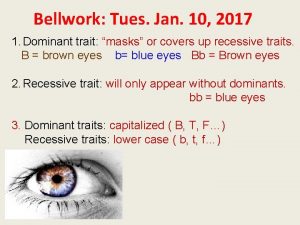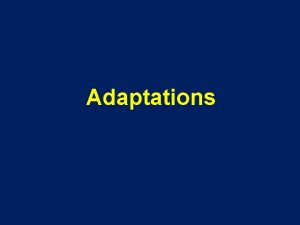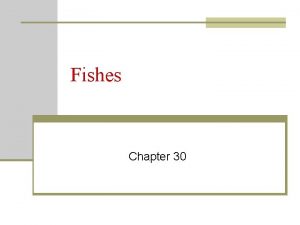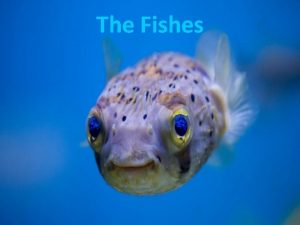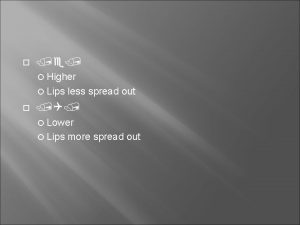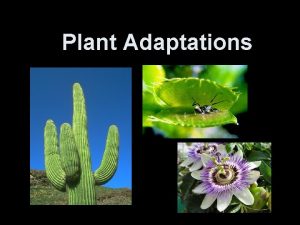Feeding Adaptations in Fishes Lips The fishes which









- Slides: 9

Feeding Adaptations in Fishes

Lips • The fishes which take large piece of food at a time do not have modified lips (all carnivorous fishes). • Suctorial feeders (suckers) have an inferior mouth and fleshy lips. • Suctorial feeders also have barbels around the mouth. The sensory organs present in these barbels help in locating the food

Mouth • The grazers and suctorial feeders have adaptations on other mouth parts. • The trumpet fishes (Aulostomidae), the cornet fishes (Fistulariidae) and the pipe fishes (Syngnathidae) as well as many butterfly fishes (Chaetodontidae) of coral reefs have mouth that resembles elongated beak.

Teeth • In bony fishes, there are three sets of teeth in jaws, mouth and pharynx. • Predatory fishes have teeth like modifications on the inner surface of the pharyngeal arch e. g. northern pike (Esox lucius). • Teeth in jaw are canine (fang like), incisor (frontline cutting), molariform (grinding with flattened surface), cardiform (short, fine and pointed arising from a pad), and villiform (elongated teeth that resembles the intestinal villi)

• Predators such as barracuda, ribbon fishes, silver bar have pointed teeth which help in grasping, puncturing and holding the prey. • Skates (Rajidae) have grinding (Molariform) teeth in oral or pharyngeal cavities. • Razor like cutting teeth (Incisors) are seen in predacious fishes like piranha of the Amazon and barracuda of warm seas. • Teeth are absent in plankton feeders.

Gill Rackers • The gill rackers are specialized in relation to food and feeding habits. • In plankton feeders, gill rackers are numerous, elongated and closely set in for straining the water efficiently. • Predatory fishes-gill rackers are reduced or absent.

Digestive track It exhibit various modifications in relation to feeding habits. Oesophagus Highly distensible muscular tube. Stomach • It shows various modifications especially with respect to shape. • In piscivorous fishes, the stomach is typically quite elongate e. g. gars and barracuda

• In omnivorous species, the stomach is sac like. • Stomach is modified into grinding organ like a gizzard e. g. mullets, sturgeons, gizzard shads. • The stomach is highly distensible, as in Bombay duck. • A remarkable modification of stomach exists in the puffers (Tetraodontidae) and porcupine fishes (Diodontidae) which inflate it with water or air to assume an almost globular shape. • True stomach is not seen in all the fishes Intestine It is shorter in carnivores and much elongated and arranged in many fold in herbivores (very long and highly coiled in rohu and mrigal) while the omnivores show an intermediate condition

Stimuli for Feeding • Internal motivation or drive - season, time of day, light intensity, time and nature of last feeding, temperature and any other internal rhythms that may exist. • Food stimuli perceived by the senses like smell, taste, sight and the lateral line system that release and control the momentary feeding act. • The interaction of these two groups of factors determines when, what and how a fish will feed
